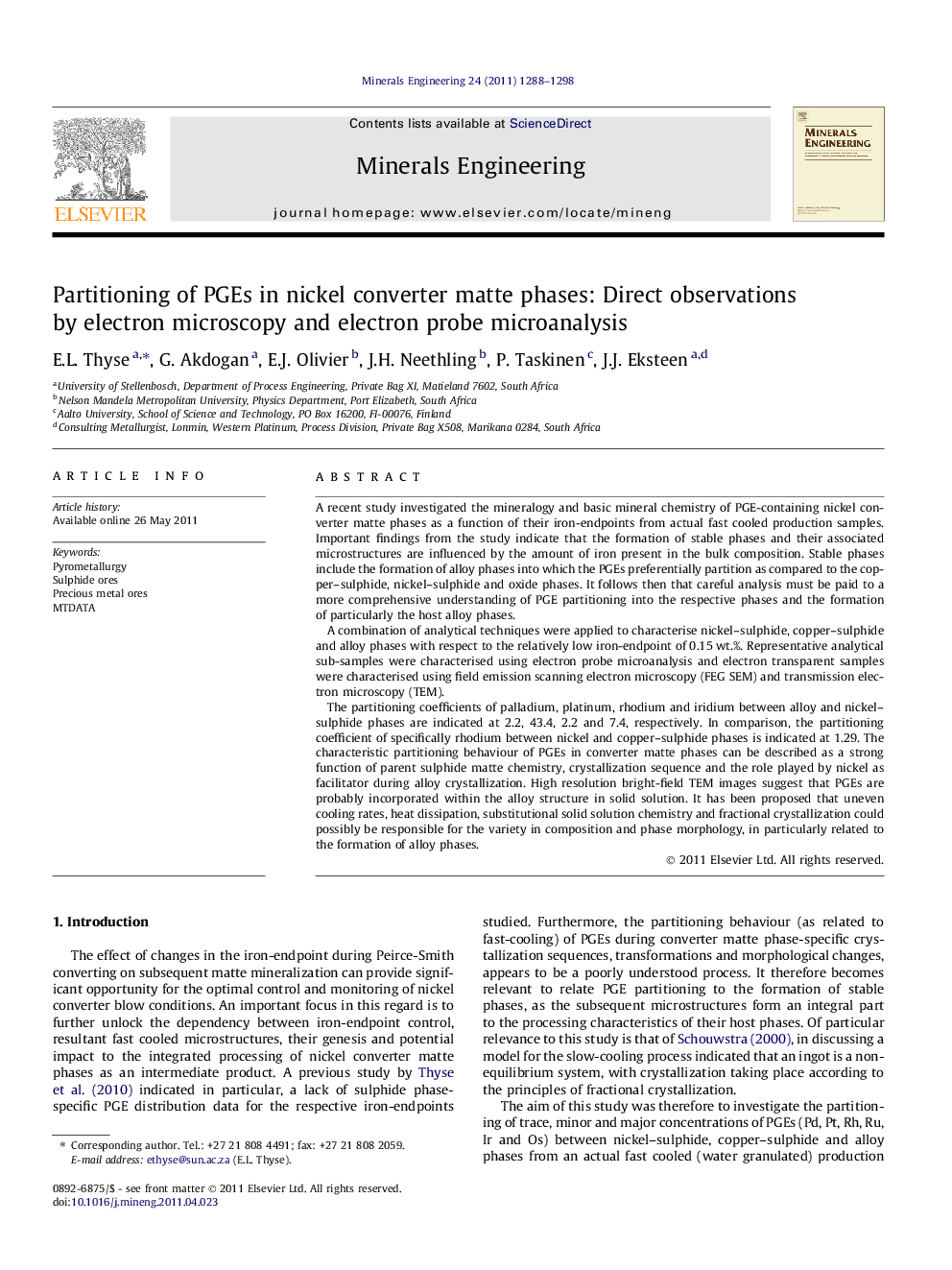| کد مقاله | کد نشریه | سال انتشار | مقاله انگلیسی | نسخه تمام متن |
|---|---|---|---|---|
| 233906 | 465373 | 2011 | 11 صفحه PDF | دانلود رایگان |

A recent study investigated the mineralogy and basic mineral chemistry of PGE-containing nickel converter matte phases as a function of their iron-endpoints from actual fast cooled production samples. Important findings from the study indicate that the formation of stable phases and their associated microstructures are influenced by the amount of iron present in the bulk composition. Stable phases include the formation of alloy phases into which the PGEs preferentially partition as compared to the copper–sulphide, nickel–sulphide and oxide phases. It follows then that careful analysis must be paid to a more comprehensive understanding of PGE partitioning into the respective phases and the formation of particularly the host alloy phases.A combination of analytical techniques were applied to characterise nickel–sulphide, copper–sulphide and alloy phases with respect to the relatively low iron-endpoint of 0.15 wt.%. Representative analytical sub-samples were characterised using electron probe microanalysis and electron transparent samples were characterised using field emission scanning electron microscopy (FEG SEM) and transmission electron microscopy (TEM).The partitioning coefficients of palladium, platinum, rhodium and iridium between alloy and nickel–sulphide phases are indicated at 2.2, 43.4, 2.2 and 7.4, respectively. In comparison, the partitioning coefficient of specifically rhodium between nickel and copper–sulphide phases is indicated at 1.29. The characteristic partitioning behaviour of PGEs in converter matte phases can be described as a strong function of parent sulphide matte chemistry, crystallization sequence and the role played by nickel as facilitator during alloy crystallization. High resolution bright-field TEM images suggest that PGEs are probably incorporated within the alloy structure in solid solution. It has been proposed that uneven cooling rates, heat dissipation, substitutional solid solution chemistry and fractional crystallization could possibly be responsible for the variety in composition and phase morphology, in particularly related to the formation of alloy phases.
► Electron microscopy, electron probe microanalysis and thermo-chemical modeling have provided a fundamental understanding.
► The formation and subsequent mineralization of particularly the NiCu-alloy structure is complex.
► Various factors could be responsible for the variety in composition and phase morphology of the NiCu-alloy structure.
► High resolution bright-field TEM images suggest that PGEs are incorporated within the alloy structure in solid solution.
Journal: Minerals Engineering - Volume 24, Issue 12, October 2011, Pages 1288–1298